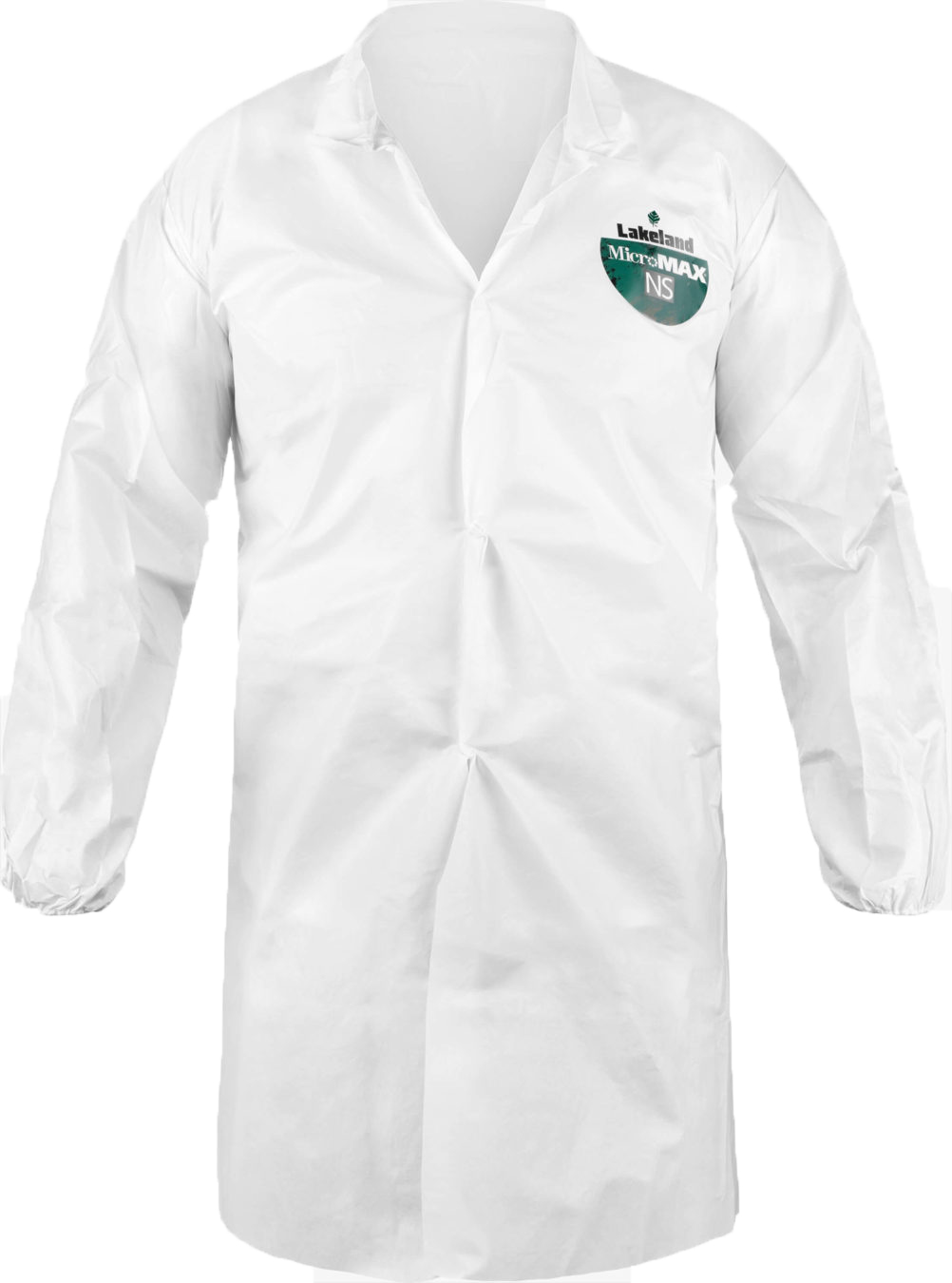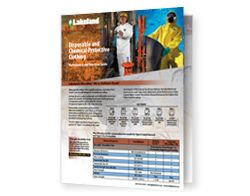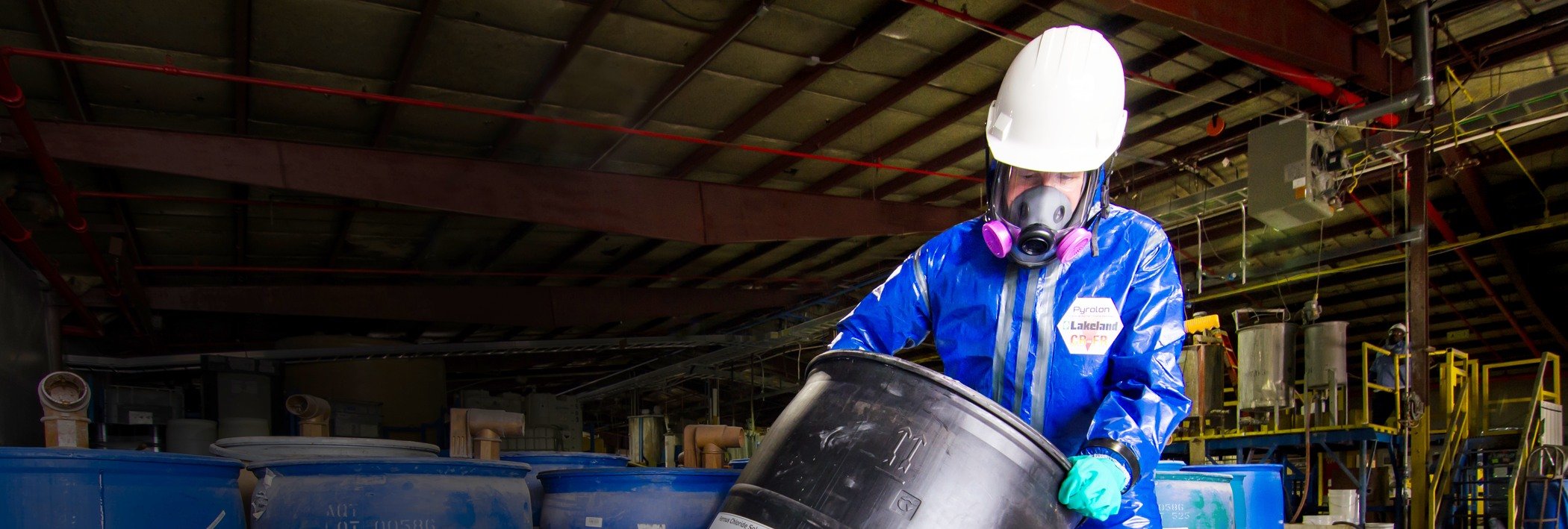If the people you are responsible for might come into contact with blood, you need to feel confident that their personal protective equipment (PPE) can stand up to Bloodborne Pathogens (BBPs). These are the infectious microorganisms in blood that can cause disease in humans.
OSHA, the federal agency that oversees workplace safety and health, established the Bloodborne Pathogens Standard (29 CFR 1910.1030) to protect employees exposed to potentially infectious blood and other bodily fluids by mandating that workers are provided with personal protective equipment (PPE).
However, the standard does not require any testing protocols or guidelines to ensure fabrics and garments actually protect wearers from dangerous bloodborne pathogens.
PPE, including gowns and other garments, gloves, as well as eye and face protection is essential to protect against viruses like HIV and hepatitis B, to newcomers like Zika and coronavirus / Covid-19.
But with no testing requirements in place, how do you know that the garment you choose will protect your workers from dangerous bloodborne pathogens?
How to Evaluate PPE Effectiveness Against Bloodborne Pathogens
To appropriately determine if your PPE will protect against BBPs, you need to look beyond OSHA guidelines. Instead, consider ISO 16604 to determine if the fabric is resistant to blood and viral penetration and then evaluate the overall garment design to see if it holds out liquids and other harmful contaminants.
Here are the requirements you should demand when choosing your PPE for BBP usage:
- Material strength and durability
- Liquid penetration prevention
- Protection against infectious agents
Below, we outline these guidelines for evaluating PPE effectiveness:
#1 Fabric Strength and Durability

ISO 16604 tests fabric strength and durability across a number of categories, including:
- Trapezoidal Tears
- Maximum Tensile Strength
- Burst Strength
- Seam Strength
- Anti-Stat Test
- Abrasion Resistance
- Puncture Resistance
- Flex Cracking
What Do the Tests Show?
According to the strength and durability categories measured by ISO 16604, MicroMax NS wins out over the leading competition, outperforming it in many of the test categories.
#2 Resistance to Liquid Penetration
Depending on the material of your protective clothing, it may be more or less resistant to liquid penetration than your average gear. Liquid penetration testing should not only test the fabric but also evaluate the seam structure. Just because a fabric passes penetration testing, doesn’t mean the seam can resist liquid penetration.
Liquid penetration testing should include:
- O-xylene Penetration/Repellency
- Butanol1 Penetration/Repellency
- Sulfuric Acid Penetration/Repellency
- Sodium Hydroxide Penetration/Repellency
What Do the Tests Show?
ISO 16604 compares the leading brand and Micromax NS in tests against a variety of chemical dangers. MicroMax leads the way with equal to or higher performance in all testing categories.
#3 Protection Against Infectious Agents
ISO 16604 specifically tests against bloodborne agents and bodily fluids and is the key standard for superior garment protection to ensure no liquid penetration can occur.
The tests include:
- Blood and Bodily Fluids
- Biologically Contaminated Aerosols
- Dry Microbial Penetration
- Mechanical Contact With Substances Containing Contaminated Liquids
A garment that has been tested only to ISO 22612, the test against penetration of contaminated dry particles, would have little relevance to protection against BBPs. Similarly, a garment that has passed ISO 16603 classification does not necessarily meet the gold standard, ISO 16604.
Why? Because ISO 16603 is a precursor test to ISO 16604. ISO 16604 is the most critical test because it measures the pressure at which “breakthrough” of the medium containing the bacteriophage will occur.
In some unfortunate cases, products claiming an ISO 16603 classification do so because they fail the ISO 16604 test. To protect your workers, always check the test results of both 16603 and 16604.
To be clear, appropriate protection from BBP requires full PPE protection from head to toe. Using ISO 16604 certified sleeves, for example, does not protect the wearer’s face and body. Similarly, choosing a coverall with fabric that passes the standards, doesn’t mean you are protected because unless the seams are sealed and tested, you could have liquid push through the seam.
Look for a garment that has been tested across all categories to protect against BBPs, including fabrics and seams.
What Do the Tests Show?
In this category, MicroMax NS wins out substantially. In fact, the leading brand didn’t even meet the minimum performance standards in protection against blood and bodily fluids.
How Do You Ensure Your Workers Are Protected?
To protect your workers, it is important to seek out performance data that compares apples to apples and to choose an optimized solution that meets your specific needs, environment, and risks.
Whether you are in the market for hard hats or protective clothing, you know that one size does not fit all. To maximize safety, you need to choose the product that provides the best protection against the specific exposure being faced.
For example, if the specific data tells you that the leading competitive fabric does not meet even the minimum threshold of the Bloodborne Pathogen tests, while Lakeland’s MicroMax® NS aces them, it’s clear which one to choose.





